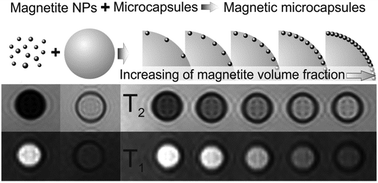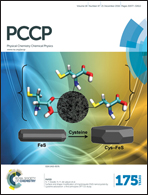In vitro and in vivo MRI visualization of nanocomposite biodegradable microcapsules with tunable contrast†
Abstract
Microcapsules, made of biodegradable polymers, containing magnetite nanoparticles with tunable contrast in both the T1 and T2 MRI modes, were successfully prepared using a layer-by-layer approach. The MRI contrast of the microcapsules was shown to depend on the distance between magnetite nanoparticles in the polymeric layers, which is controlled by their concentration in the microcapsule shell. A fivefold increase in the average distance between the nanoparticles in the microcapsule shell led to a change in the intensity of the MR signal of 100% for both the T1 and T2 modes. Enzyme treatment of biodegradable shells resulted in a change of the microcapsules’ MRI contrast. In vivo degradation of nanocomposite microcapsules concentrated in the liver after intravenous injection was demonstrated by MRI. This method can be used for the creation of a new generation of drug delivery systems, including drug depot, with combined navigation, visualization and remote activated release of bioactive substances in vivo.


 Please wait while we load your content...
Please wait while we load your content...